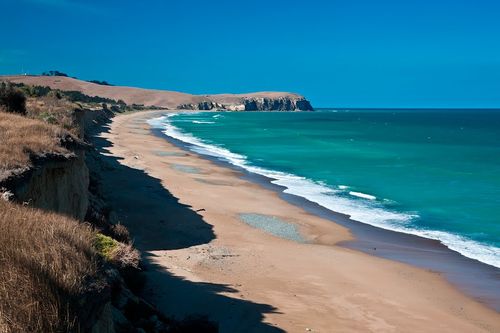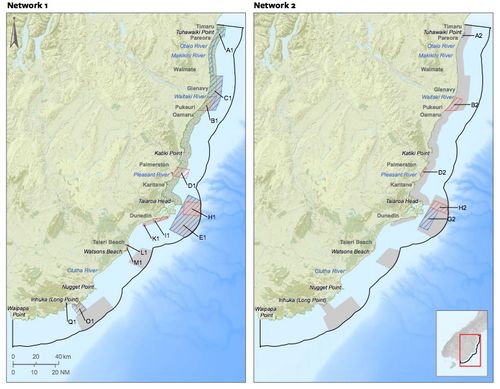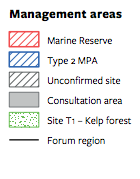Otago Marine Protection Process Flawed
The South East Marine Protection Forum focused too much on curbing commercial fishing and failed to meet its biodiversity protection objective, a seafood industry leader says.



A 314 page report was presented to Fisheries Minister Stuart Nash and Conservation Minister Eugenie Sage earlier this month, with two network options recommended to protect areas off the east coast of the South Island.
Network 1 is pushed by environmentalists, tourism, scientists and one recreational fishing representative, and Network 2 backed by commercial fishing representatives and a recreational representative of local fishing clubs.
Southern Inshore Fisheries chief executive Carol Scott sat on the forum and said the fishing industry supports an integrated approach to marine biodiversity protection, but it has to be done in a more cooperative way than this forum.
“Our Network 2 proposal of five marine protected areas takes into account the existing marine biodiversity protection provided by commercial fishing regulations and voluntary commercial fisheries closures,” Scott said.
“It also takes into account the habitat protection provided by seven mataitai reserves (established for customary fisheries management purposes) that are geographically dispersed across the region and because of their fisheries restrictions, directly contribute to habitat protection.
“As these reserves allow recreational fishing, and the potential for them to use dredging - even though there was never any done nor species to support the need for dredging - we were told they could not be considered but this is nonsense given the level of protection from commercial fishing methods.”
The proponents of Network 1 sought to justify Marine Protected Areas on irrelevant grounds such as protection of individual species, tourism, and education benefits, Scott said.
“The forum process was too protracted when it could have been more focused on the MPA Policy and guidelines from the start, with open discussions on how sites suggested met the policy and what the habitat protection would bring to the biodiversity in the region,” she said.
The MPA Policy states: “Biodiversity protection will be at the habitat and ecosystem level, not individual species (e.g. marine mammals).”
“Furthermore, there was a focus on how to minimise and exclude commercial fishing as a threat to habitats or protected species when the main focus was to be on classifying and protecting certain habitats," Scott said.
The annual cost to commercial fishing could be $3.6 million if Network 1 is chosen, the report says.
“The costs to industry in the document only relates to the catch - multiplied by the export value. It does not fully reflect the impact on individual fishers, quota owners, the value of quota, or on communities and businesses that rely on the commercial sector,” Scott said.
An aquatic ecologist also raised concerns over the forum process.
Laurel Teirney oversaw the successful Fiordland Marine Guardians between 1995 and 2003, a process that resulted in the Fiordland Marine Management Act 2005.
She said the Otago process was flawed from the outset, for two reasons.
“One, then Minister of Conservation Nick Smith (who started the process in 2014) predefined an environmental objective for the forum and appointed an environmentalist chairperson,” Teirney told Southland Times.
“Two, the forum members were neither put forward by their respective interest groups, nor balanced in the interests and views they represented, with a majority from the environmental side of the argument once more.
“Inevitably with that set-up, you're going to get results born of conflict, rather than cooperation and buy-in from the various parties.”
Fisheries Inshore New Zealand chief executive Jeremy Helson said it is clear that marine protection in New Zealand needs a fundamental re-think.
“The legislation is out-dated, the MPA Policy is routinely ignored, and the implementation process is too long, too costly and invariably produces irreconcilable views,” he said.
“The seafood industry supports a risk-based approach to marine protection that uses a range of targeted tools to protect our biodiversity and recognises those of us who use our marine environment for recreational, cultural and commercial purposes.”
